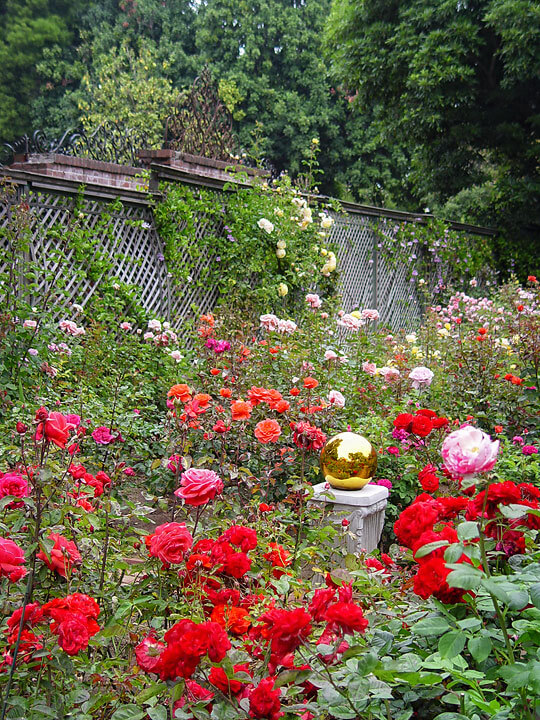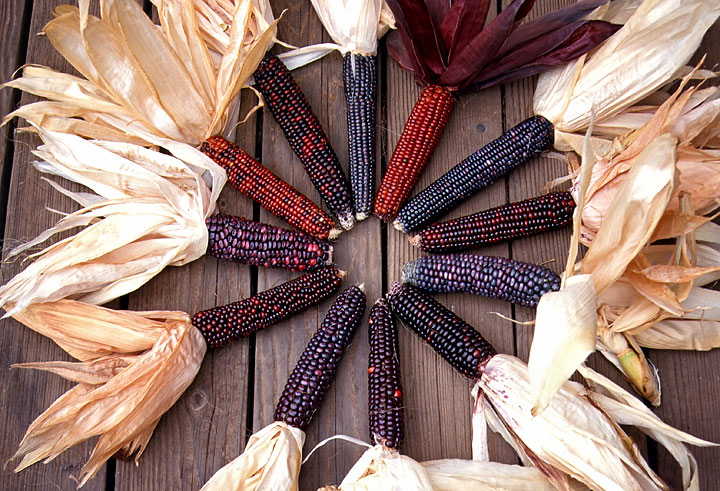This summer is already a perfect storm, and we aren’t even in hurricane season yet! If you’ve already been hit with Mother Nature’s powerful presence, your plants need help to recover. Whether it’s heat and drought or saturated soils and gale force winds – plants are suffering. They need your attention in different ways depending on where in America you live. For those horribly damaged in the East, it’s important to take a close look at your woody trees and shrubs. Storm winds can injure them in unique ways that may only be revealed upon close inspection. Pests and diseases often enter storm damaged trees through these sometimes subtle breaks in the bark. Attending to wounds now can not only help them recover faster, you may be able to prevent bigger problems down the road.
Continue reading “Healing Storm Damaged Trees”
Author: Maureen Gilmer
Organic Fertilizer Power Bars Send Sunflowers Skyward
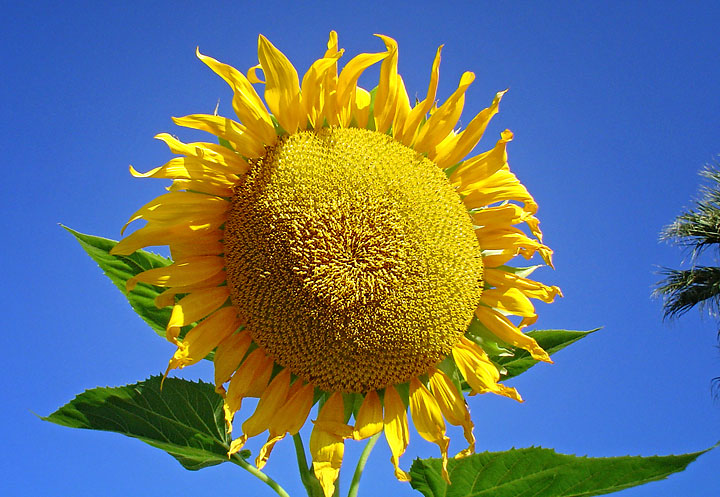
Try growing fifteen feet tall inside of 90 days and you’ll understand what it’s like to be a sunflower. If you’ve got Mammoth hybrid sunflowers in your garden, remember this if yours aren’t showing much vigor. Maybe they need an organic Power Bar to get energy levels back on track. It takes a lot of nitrogen to make a huge stalk. Phosphorous and potassium helps grow roots to hold it upright and form huge flowers packed with edible seed. Any quality OMRI Listed fertilizer formulated for flowers will work. Apply generously, mix into the soil and water well and often. Then stand back and watch your plants bolt skyward as they should.
Halting Tomato Hornworms with Bacillus thuringiensis
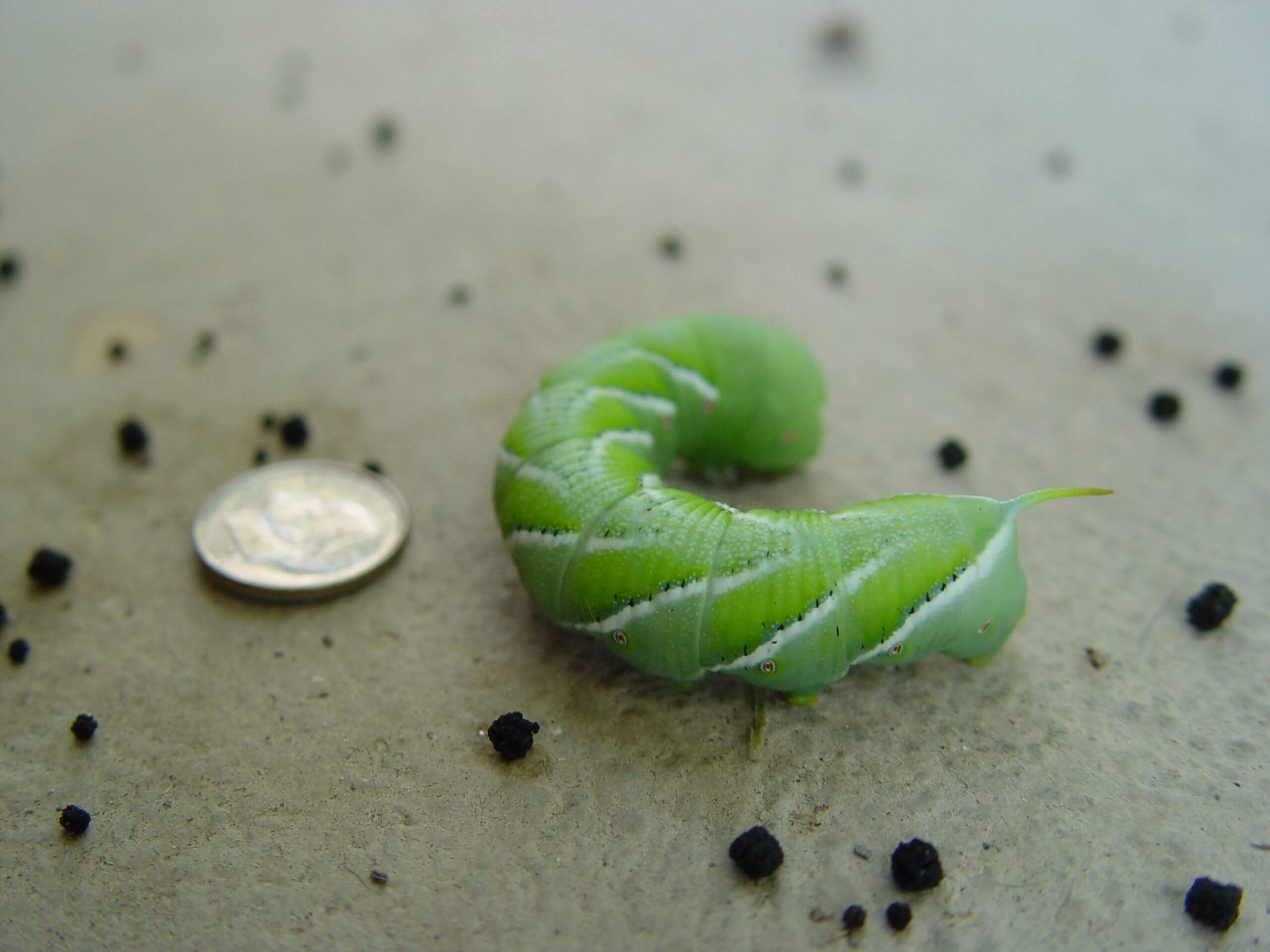
Tomato hornworms arrive at night as gossamer-winged moths that lay their eggs on your carefully cultivated tomatoes. Hatchlings quickly grow to enormous green caterpillars that can decimate a plant overnight.
Inspect new growth daily for these voracious caterpillars. Hand pick them promptly and discard before they feed on the fruit itself.
Another option is to spray the plants with BT (Bacillus thuringiensis). This safe, non toxic, control is approved for organic gardening. Once BT is on the leaves, worms eat it and get a fatal belly ache. This natural spray is one of the greatest success stories in organic horticulture. You’ll find it in garden centers and home improvement stores wherever Black Gold products are sold.
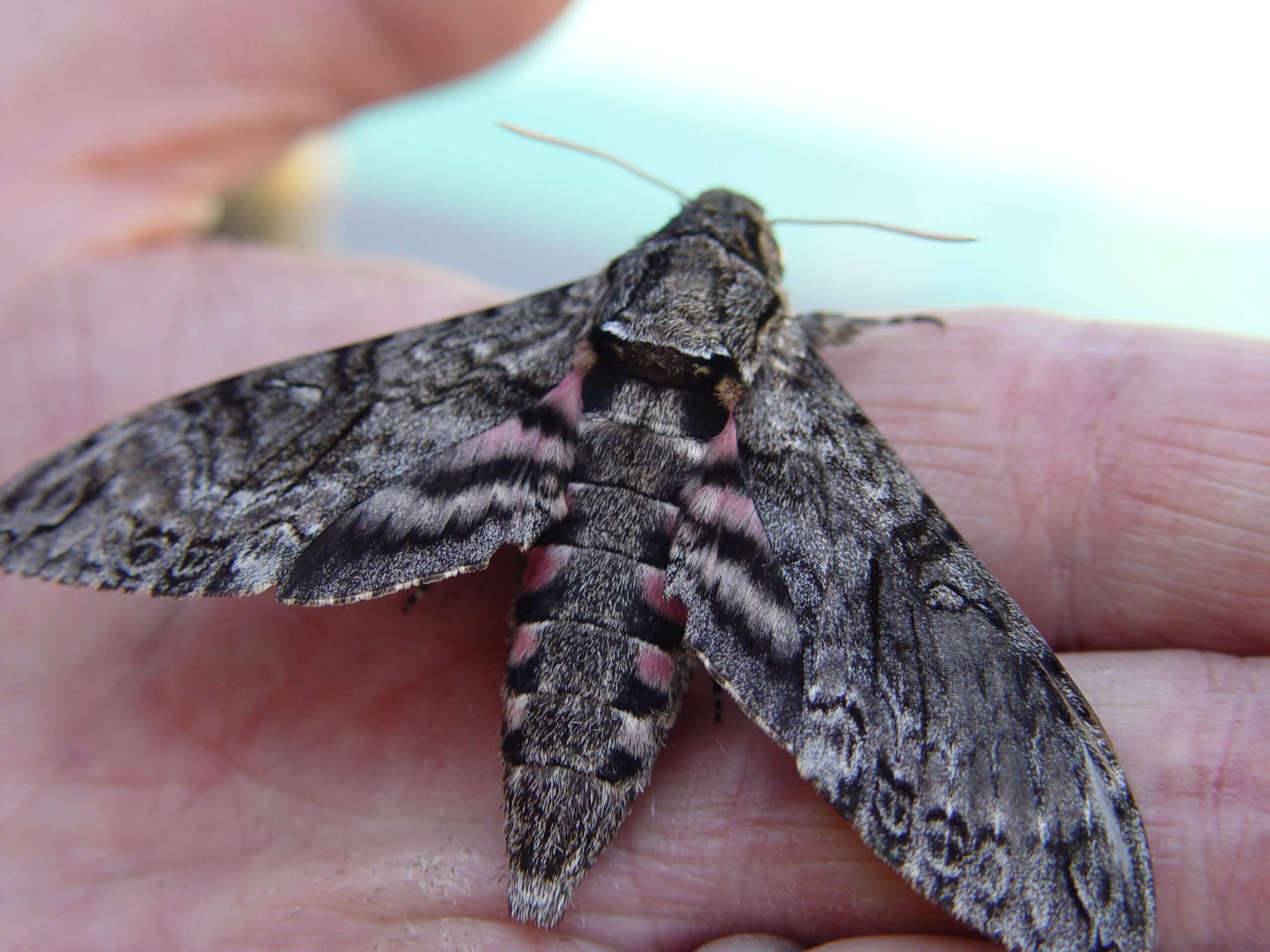
Grow a Big Hip Japanese Rose for Food and Medicine
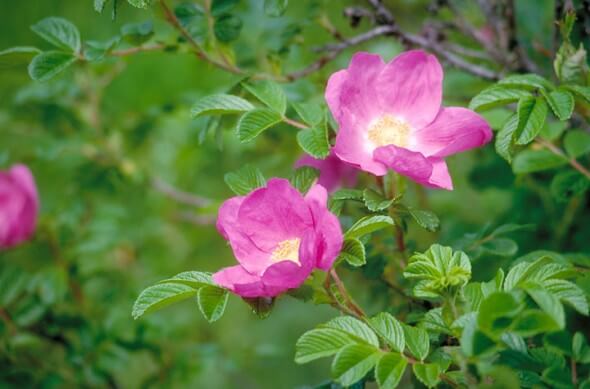
During World War II the Nazis blockaded English ports so they could not import citrus. As a result many children began to show signs of Vitamin C deficiency, the predecessor to scurvy. Another source of the vitamin had to be found so all local plants were tested. Fruits known as hips from a rural rose bush proved to be packed with vitamins. Ounce for ounce this rose and all other rose fruit contain more Vitamin C than citrus. From the quantities of fruit gathered far and wide, a potent vitamin rich syrup was made that saved the children’s health.
If you’re gardening for self sufficiency, you must have at least one good organically grown rose that bears large hips. The best species for fruit production is Rosa rugosa, known as the Japanese rose. These produce an annual crop of beautiful pink flowers each year followed by fat, luscious fruit.
Rugosas are tough as nails, with foliage that resists the usual fungal diseases that plague other roses. It’s far more cold hardy too, for easy care in northern climates. Rugosas can be found all along the eastern seaboard because the uniquely thick leaves retain moisture despite persistent winds. The whole plant is remarkably tolerant of salt air and alkaline soils too.
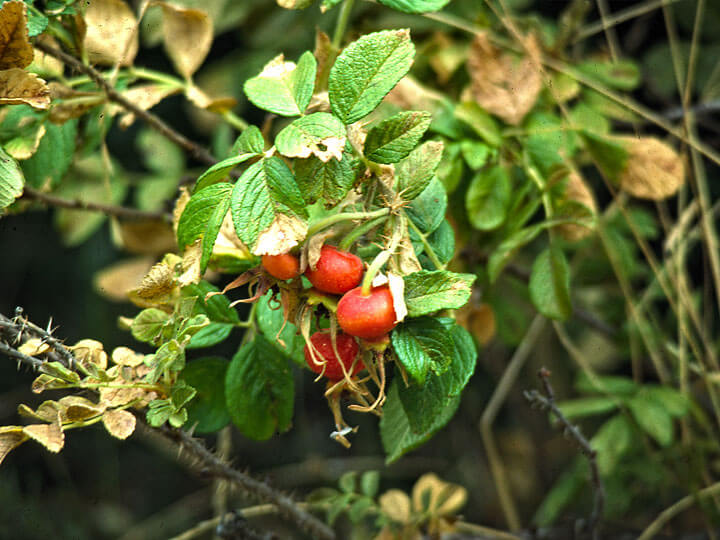
Rosa rugosa is a long time favorite for rural hedging because the root systems spread out and send up new sprouts. This helps a single individual to spread into a large patch or dense hedge that yields plentiful flowers and fruit. It’s also easy to propagate free copies by simply digging up a piece of root with its sprout attached and transplant to a pot of Black Gold All Purpose Potting Soil.
Hips form in summer and ripen to red-orange in the fall. They are astringent until fully ripe, then become sweet enough to eat off the bush. Once the hips have been exposed to a frost, it’s easier to prepare them.
Use minced rose hips to add raisin-like flavor to baked goods with a bonus of high vitamin content. They also make a famously healthy rose hip jelly for ideal holiday gifts. Fresh brewed rose hip tea with honey is perfect for treating colds or flu.
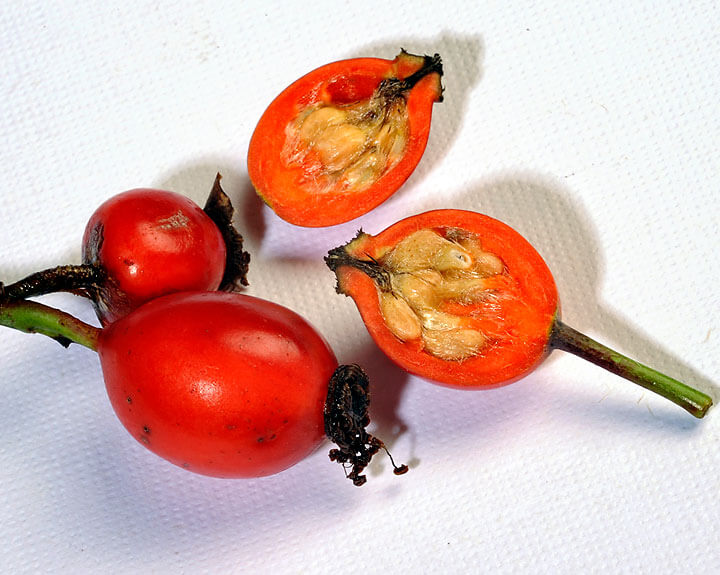
Whether you grow your rose hips, gather them from the wild or out of other peoples’ gardens, you’ll want to preserve them for future use. First pick the hips, wash well, then peel the flesh away from the seeds clustered at the center. These seeds and attached hairs must be discarded so you’re left with clean flesh. You can also sow them into Black Gold Seedling Mix to create an entire hedge of new plants.
To freeze fresh rose hips, cover a cookie sheet with tin foil and scatter the chunks of fresh rose hips so none are touching. Freeze, then remove from the foil and place in conveniently sized Ziploc bags to store in the freezer until needed.
To make rose hip tea, add a few tablespoons of clean fresh or frozen flesh to a sauce pan of boiling water, then turn down the heat to simmer gently for 10 minutes. The resulting tea will be acidic tasting and rich in antibacterial properties. It will also be chock-full of natural vitamins that strengthen the immune system.
If you’re striving for greater self sufficiency, add a rugosa to your home landscape and let it grow large and flower much. Then when winter cold and flu season rolls around after medicinal herbs have died back, you’ll have a storehouse of organically grown hips from your own Japanese rose.
Fertilize Organically for more Floriferous Roses

When I was a young horticulture student in Northern California, in between classes my aged mentor employed me to care for his hybrid tea cutting roses. His garden featured at least thirty of them back in 1979 when spraying, pruning, and fertilizing was a continuous series of tasks all season long.
Rose Nutrition
Among the many lessons were important basics on rose nutrition. It was truly amazing how much standard rose food each of the plants needed to keep producing new buds without pause from May to October. In California the rose season is long, which demanded I feed on a regular schedule. Back then I used 16-16-16 synthetic granules and watched the plants go nuts…for a little while. Then they’d start petering out as the synthetic fertilizer leached further beyond the root zone every time I watered.
Since then we’ve learned that the yo-yo diets of synthetic fertilizers are not beneficial to whole plant health. Growing roses organically can reduce the frequency of fertilizer applications because these nutrients release slower but remain in the root zone far longer. In addition, they contribute to overall soil fertility by stimulating microbes that boost rose plant immunity.
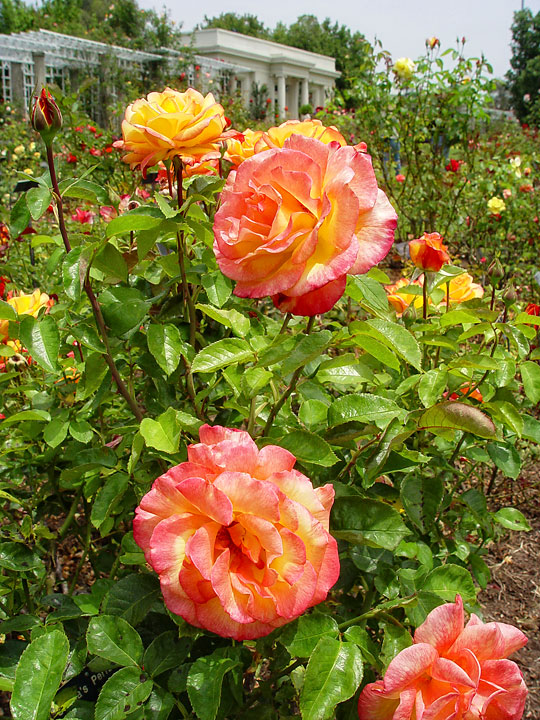
Organic Rose Fertilizers
Even before the new emphasis on organic gardening, rose growers discovered the benefits of alfalfa meal fertilizer. It’s cultivated into the soil around the rose plant at a rate of about a half cup per rose. Alfalfa meal is low in nitrogen, just 3%, but it’s released quicker than other organic sources. It is particularly useful in spring to stimulate the development of new canes, which are a rose grower’s goal. Plus, nitrogen helps to stimulate vigorous new growth, strong stems and plentiful foliage to support the flower buds to come.
But roses need phosphorus and potassium too, because these nutrients are essential for new flower production. That’s why rose & flower fertilizers contains bloom stimulating phosphorus and potassium. These nutrients are derived from a variety of organic sources that can be slow to become fully active, but once they are, there is no better way to feed. Your roses will take up organic fertilizer at their own rate rather than the sudden dose of synthetic rocket fuel. Mark the calendar for regular feedings throughout the growing season so your plants will perform without a lull.
Benefits of Organic Rose Fertilizers
Roses are so versatile they are grown in ground and in pots where feeding is even more important due to the limited root zone. Grown chemical free, roses may become less vulnerable to pests and diseases due to natural resistance supported by relationships with certain soil fungi that work through the roots. Organically grown roses won’t have to suffer the yoyo effect of high nutrient loads after fertilizer application, followed by plunging lows a week or two later. They’ll respond much like a child who eats a bowl of sugary breakfast cereal, then when blood sugar plunges in a couple of hours she falls asleep at school
Key to success with organic fertilizers is to make sure they’re worked into the soil and watered deeply and consistently to help plants take up these nutrients. Even moisture levels stimulates better microbe activity too, which in turn makes the soil more fertile over all. For more naturally floriferous roses, feed your soil with organic fertilizer and avoid chemicals. Your plants will reward you with fewer diseases, more vigorous growth and a consistent rate of new bud formation. And that means new flower buds will form every day to remain more floriferous all season long.
Gather Free Hollyhock Seed
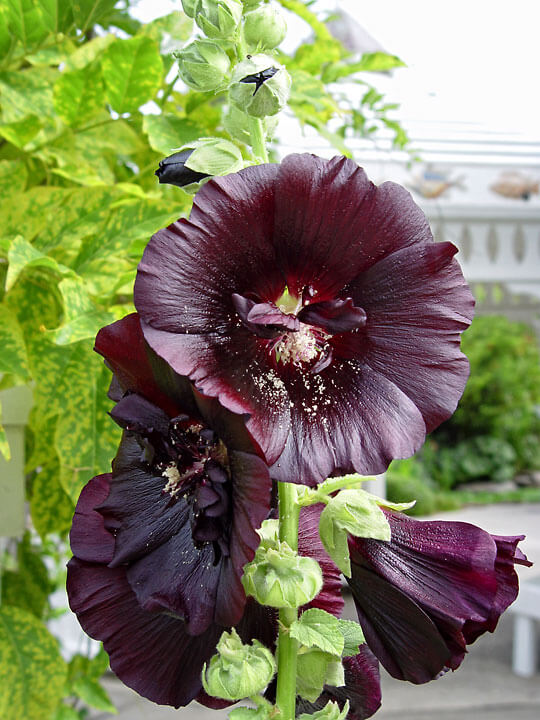
Hollyhocks have long been America’s favorite flower for country gardens because the Hollyhock seed can be gathered and sown for free. Althea rosea is a biennial, growing from seed the first year with modest blooms, then the plants come back from the roots the second year for a far more magnificent showing. Therefore sow hollyhock every year. The first flowers will be going to seed by the time the last ones open at the top the stalk. Down low you’ll find capsules of small disk-like seeds. As each capsule matures the outer covering becomes fragile and papery when the seed is ready to be gathered to store. They’ll be ready for spring sowing in Black Gold Seedling Mix for an even bigger display next year.
Bedding Flower Trickery: Tips For Making More Blooms
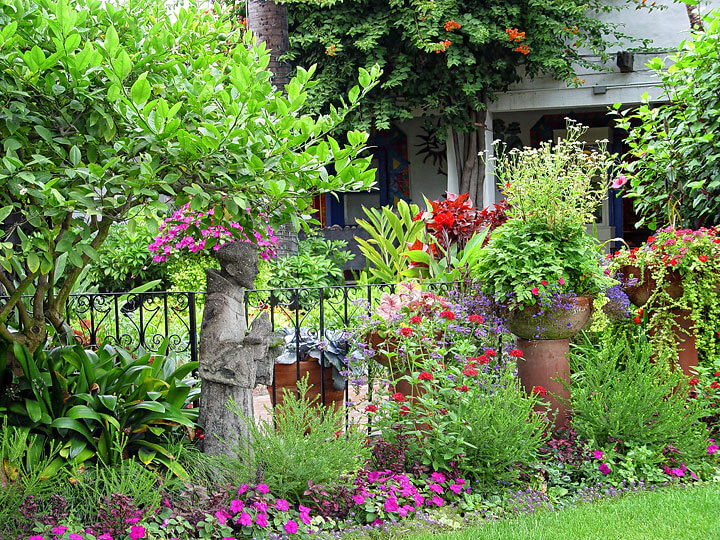
Your annual bedding plants have a short life cycle. Seed formation is the mechanism that tells them to stop making more blooms. To keep the marigolds, petunias, zinnias and other summer flowers reblooming, inspect them daily. Immediately nip off every flower past its prime. Cut others in bud or bloom to bring indoors. Do this religiously and your annuals will think it’s still June all summer long. Tricking them to flower longer by preventing seed means they’ll need more flower food during the hot months. Generously work in fertilizer every few weeks and keep them well watered for big color lasting well into fall.
Corn Pollination
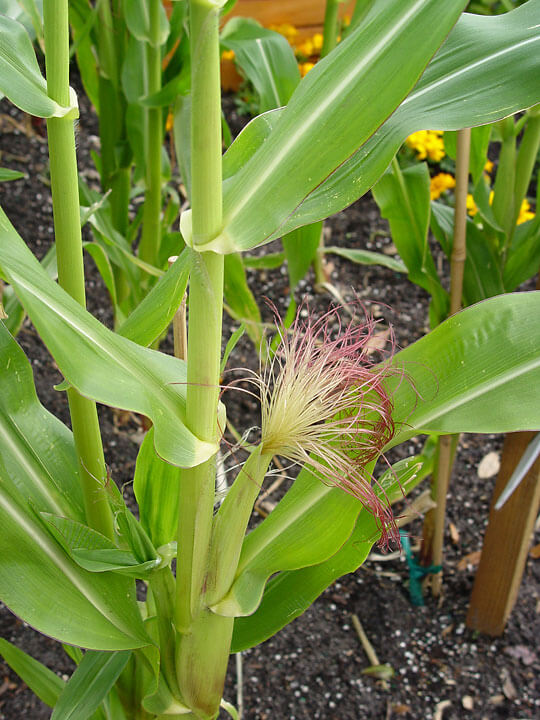
We call it corn, but pointy headed plant geeks know this species as Zea mays, or maize. Of all our garden vegetables, this giant grass can be the most challenging to new gardeners. This is because corn grows differently.
Corn as we know it is not a naturally created plant. It was altered millennia ago by human intervention which began in Mexico. They started with a wild grass known as teosinte, which bears little resemblance to modern corn. The plant we know today is such an altered species it can no longer naturalize or reproduce itself in the wild. That’s why it can go so wrong in the garden.
The corn plant produces tassels at the top where pollen is formed, then when the time is right it rains down upon the developing ears held lower on the plant. But weather doesn’t always cooperate with trickle-down pollination. That’s why planting corn is done differently than other bee-pollinated plants.
First time corn growers become disappointed with their ears because kernels are missing. This is a sign of incomplete pollination. The cause is plants too widely spaced or when grown in just one or two rows. Farmers must have 100% kernel development to sell their corn. They ensure pollination by growing corn in blocks, which ensures sufficient pollen density to guarantee a perfect ear.
In the home garden, strive for a block as long as it is wide so there’s even access to pollen for every plant. Space seeds and rows exactly as it says on the package, which is optimum for pollination. This demonstrates why it’s hard to grow corn in smaller gardens. There simply isn’t enough room to create a block large enough. That’s why those who grow corn do so directly in the ground rather than in raised beds or well defined potagers.
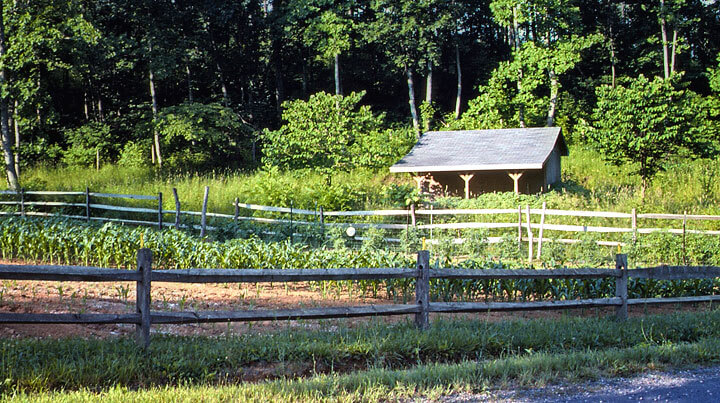
Corn, like most grass, is a heavy feeder that demands more fertile ground to thrive. You may have used compost and other organic matter to fortify the soil this spring, but that may not be enough for corn. Like turf grass, its favorite nutrient is nitrogen, which stimulates leaf and stem growth. For the home garden, boosting nitrogen levels in your corn growing soil can make a big difference in the vigor of your plants and the size of ears they produce. While farmers use commercial synthetic fertilizers, organic gardeners can achieve similar results with Black Gold products.
The best way to spot-fortify soil for corn is to work some fertilizer formulated for vegetables thoroughly into the ground as deeply as you can. This is our most potent organic source of nitrogen that’s OMRI Listed so you know it’s safe. At a whopping 18% nitrogen, a little bit goes a long way. This organic nitrogen is available to the corn plants over the entire growing season compared to synthetics that are here today and gone tomorrow.
Give your soil a lift before planting seed no matter what kind of corn you grow. Indian corn will produce more brightly colored ears for decorating. Heirloom varieties will thrive on the modest nutrient loads for a variety of unique flavors. Best of all, you’ll proudly serve picture perfect organic sweet corn to your family and friends when harvest rolls around.
Make Hanging Baskets More Drought Tolerant
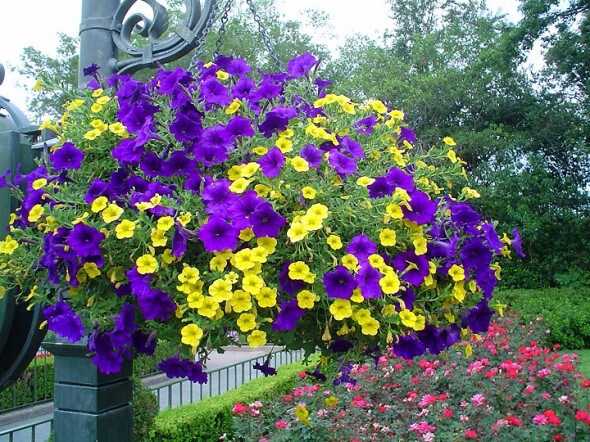
Moss baskets make it next to impossible to over water plants, and that’s why they’re different from any other hanging pot. Each basket is composed of a suspended wire framework lined with fibrous material and filled with potting soil. The reason for fiber lining is to allow optimal drainage throughout the whole container, not just where there are drain holes. It also allows you to water daily without guilt, so the soil remains evenly moist without the risk of saturation.
Hanging Basket Liners
Hanging baskets have changed in the last few years. Many are available with coarse Sphagnum moss that is permeable and holds water. Planting through the sides is now standard, making every basket a potential living ball of flowers. These baskets are now standard fare for growers of fuchsias, hanging ferns and begonias.
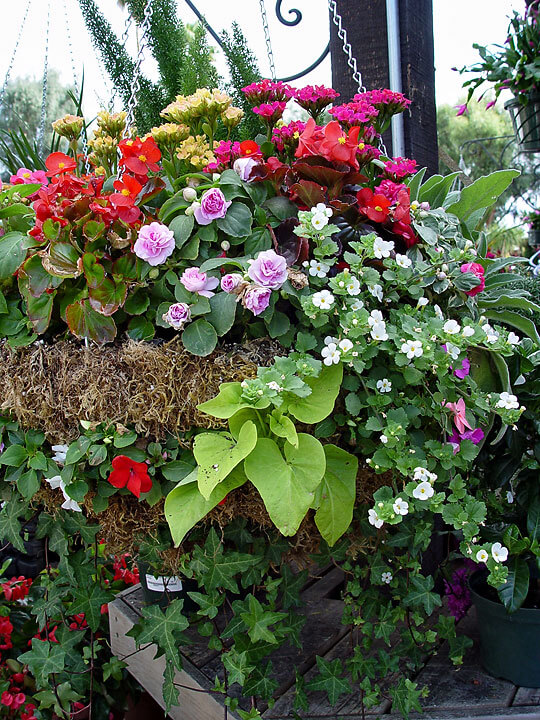
Baskets pre-lined with coco fiber are also popular and eliminate the time-consuming process of manually lining baskets with coarse, wet Sphagnum moss. This coco fiber is thinner and just as porous, but there’s a down side. The potting soil inside will often dry out more quickly. The dehydration rate increases exponentially in arid climates, particularly during windy or hot weather.
To create baskets that are more weather resilient, select containers at least 14 inches in diameter. This creates a soil mass that is large enough to support a more expansive root zone of long-lived plants, and it reduces moisture loss through the coco fiber. The next step is to select the right potting soil for your local climate.
Hanging Basket Potting Mix
Black Gold Waterhold Cocoblend Potting Soil is ideal for hanging baskets in dry climates. It is formulated for increased water holding ability without compromising drainage. To do so it contains coir, a byproduct of the coconut processing industry that is highly absorptive and able to retain moisture better than ordinary potting soils. It’s OMRI Listed too, so you can use it for organically grown edible flowers, vegetables and herbs.
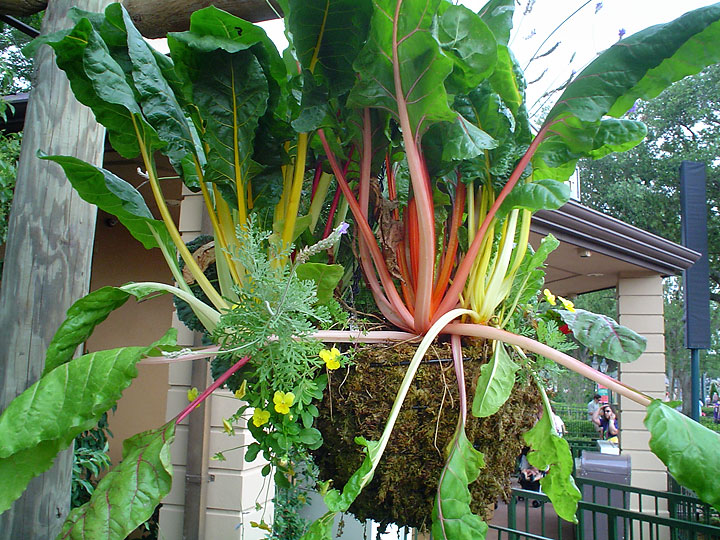
What really makes coir desirable is the speed at which it absorbs water. While dry peat can be a little slow on the uptake, coir literally sucks up every drop you apply. In a hanging basket this means less immediate drainage and more water holding capacity over time. When the dry winds of summer kick in, baskets with this coir blend soil will fare far better.
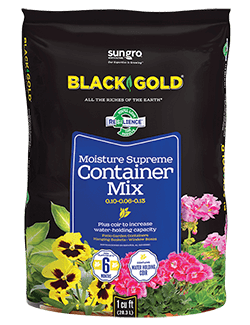 For those who live in humid, rainy summer climates, over-saturation can be a problem after daily rain or heavy downpours. Potting soil can become super saturated, which limits oxygen availability to the roots until conditions dry out. Black Gold® Moisture Supreme Container Mix was designed for solving this very problem by maximizing oxygenation of the root zone. When you use this blend in your hanging baskets, you are less likely to see fungal diseases and rotting that can occur despite the porosity of the basket liner.
For those who live in humid, rainy summer climates, over-saturation can be a problem after daily rain or heavy downpours. Potting soil can become super saturated, which limits oxygen availability to the roots until conditions dry out. Black Gold® Moisture Supreme Container Mix was designed for solving this very problem by maximizing oxygenation of the root zone. When you use this blend in your hanging baskets, you are less likely to see fungal diseases and rotting that can occur despite the porosity of the basket liner.
Make this year’s new baskets with Black Gold potting soils formulated for your climatic challenges. Then replace the potting soil in your older baskets to eliminate over-compaction. Once you discover how a climatically formulated potting soil improves your hanging baskets, you’ll never settle for anything else.
Marigolds Repel Pests for Easy Organic Gardening
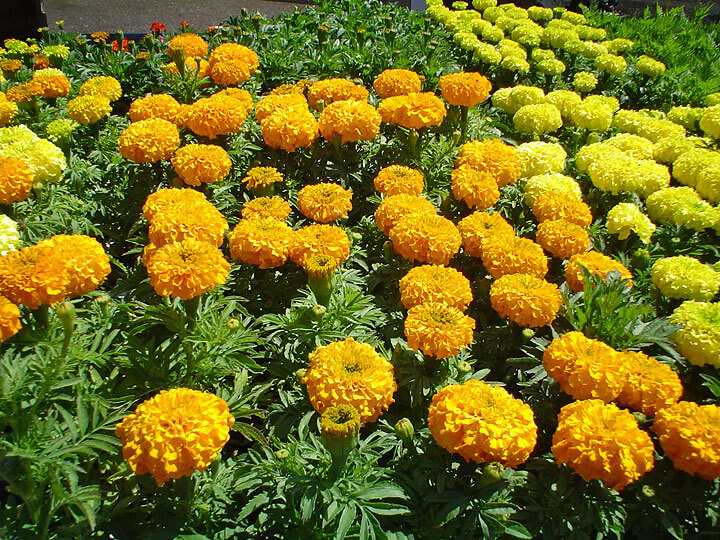
Marigolds (Tagetes erecta) include both the small French and the big African marigolds. These common flowers originated with a wildflower from Mexico developed in the Mediterranean region just after the Conquest. Ever since, the marigold has been grown in food gardens as a natural insect repellent. That’s because marigolds repel pests for more efficient organic gardening!
This annual flower species bears a strong, pungent scent that will drive bugs away from other plants close by in the garden. Underground, marigold roots repel microscopic worms called nematodes which attack food plants. Plant your marigolds all around the organic kitchen garden to drive away undesirable pests without hurting important beneficial predators such as praying mantids and ladybugs.
Marigolds are annuals, and for all annual plantings we recommend organic fertilizer formulated for flowers. A seasonal application will keep them happy and blooming throughout the growing season!


